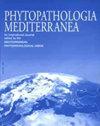马铃薯抗早疫病候选标记基因和酶的选择
IF 1.9
3区 农林科学
Q2 AGRONOMY
引用次数: 1
摘要
由Alternaria alternata(Fr.)Keissler引起的早疫病是马铃薯和其他栽培茄属植物的一种严重疾病。在马铃薯中,确定对A.alternata防御反应的分子成分是有限的。检测了6种马铃薯基因型(对病原体具有抗性的10/33/R1、3/33/R2和21/33/R2,以及对病原体敏感的8707/106、8703/804和8707/112)接种A.alternata后的宿主转录物积累,以了解它们对A.alternat基因型的反应机制。对标记基因PR-2、ChtA、PR-5、PR1-b、PIN2、ERF3、PAL和LOX、过氧化氢酶(CAT)、超氧化物歧化酶(SOD)、过氧化物酶(POX)、多酚氧化酶(PPOs)和苯丙氨酸解氨酶(PAL)的活性以及生物量生长参数进行了分析。与易感基因型和未接种对照相比,接种抗性基因型的PR-2、ChtA、PR-5、PR1-b和PAL基因的表达显著增加。在抗性接种植物中,PIN2、ERF3和LOX基因的转录水平降低。同时,与易感和未接种的对照相比,接种抗性宿主基因型的POX、SOD和PPOs活性显著增加。基因型21/33/R2的CAT活性和抗性基因型21/33/R2和10/33/R1的PAL活性在易感和未接种的人群中增加。与未接种的对照相比,接种植物的寄主生长参数降低。了解受感染马铃薯植株防御过程中基因表达水平和酶产生的变化,可以为未来的研究提供信息,以确定防御机制,并有助于培育抗早疫病的马铃薯品种。本文章由计算机程序翻译,如有差异,请以英文原文为准。
Candidate marker genes and enzymes for selection of potato with resistance to early blight, caused by Alternaria alternata
Early blight, caused by Alternaria alternata (Fr.) Keissler is a serious disease of potato and other cultivated Solanum species. The molecular components defining defense responses to A. alternata in potato are limited. Host transcript accumulation after A. alternata inoculation of six potato genotypes (10/33/R1, 3/33/R2 and 21/33/R2, resistant to the pathogen, and 8707/106, 8703/804 and 8707/112, susceptible) was examined to develop understanding of mechanisms of their responses to A. alternata genotypes. The marker genes PR-2, ChtA, PR-5, PR1-b, PIN2, ERF3, PAL and LOX, activity of catalase (CAT), superoxide dismutase (SOD), peroxidase (POX), polyphenol oxidase (PPOs) and phenylalanine ammonia-lyase (PAL), as well as biomass growth parameters, were analysed. Expression of PR-2, ChtA, PR-5, PR1-b and PAL genes was greatly increased in the inoculated resistant genotypes compared to the susceptible genotypes and un-inoculated controls. Transcription levels of PIN2, ERF3 and LOX genes were decreased in resistant inoculated plants. Simultaneously, activities of POX, SOD and PPOs were greatly increased in the inoculated resistant host genotypes, compared to the susceptible and non-inoculated controls. CAT activity in genotype 21/33/R2 and PAL activity in resistant genotypes 21/33/R2 and 10/33/R1 increased in the susceptible and non-inoculated. Host growth parameters of inoculated plants decreased compared to un-inoculated controls. Knowledge of changes in gene expression levels and enzyme production in defense processes in infected potato plants can inform future studies to identify the defense mechanisms, and assist generation of potato cultivars resistant to early blight.
求助全文
通过发布文献求助,成功后即可免费获取论文全文。
去求助
来源期刊

Phytopathologia Mediterranea
生物-植物科学
CiteScore
4.40
自引率
8.30%
发文量
28
审稿时长
6-12 weeks
期刊介绍:
Phytopathologia Mediterranea is an international journal edited by the Mediterranean Phytopathological Union. The journal’s mission is the promotion of plant health for Mediterranean crops, climate and regions, safe food production, and the transfer of new knowledge on plant diseases and their sustainable management.
The journal deals with all areas of plant pathology, including etiology, epidemiology, disease control, biochemical and physiological aspects, and utilization of molecular technologies. All types of plant pathogens are covered, including fungi, oomycetes, nematodes, protozoa, bacteria, phytoplasmas, viruses, and viroids. The journal also gives a special attention to research on mycotoxins, biological and integrated management of plant diseases, and the use of natural substances in disease and weed control. The journal focuses on pathology of Mediterranean crops grown throughout the world.
The Editorial Board of Phytopathologia Mediterranea has recently been reorganised, under two Editors-in-Chief and with an increased number of editors.
 求助内容:
求助内容: 应助结果提醒方式:
应助结果提醒方式:


